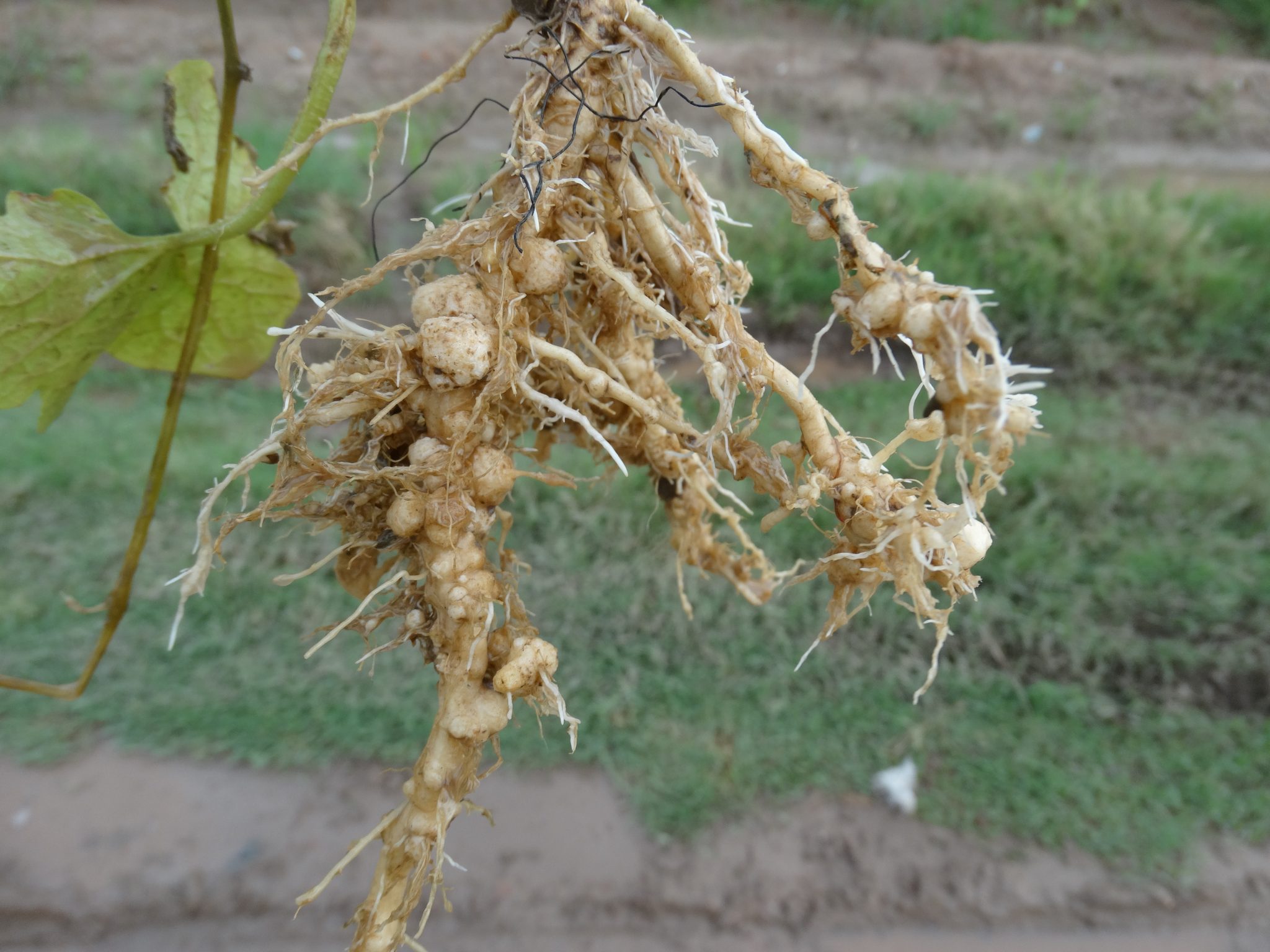Vegetables

*This is an excerpt from The Alabama Vegetable Gardener, ANR-0479.
Some gardeners are surprised to find that their gardens are not producing as many vegetables as they had expected. There could be several reasons for a garden’s poor performance: low soil pH, poorly drained or compacted soils, inadequate sunlight, or insufficient nutrients. But if these factors are not the problem, nematodes could be the culprit responsible for poor performance. Many gardeners fail to recognize nematode damage because nematodes feed on the plant’s roots, restricting their growth and impairing their ability to take up needed minerals and moisture from the soil. Above ground, plants damaged by nematodes are often stunted, exhibit mineral deficiencies, and, in extreme cases, may wilt and die.
What Are Nematodes?
Nematodes are extremely small, wormlike animals that can only be seen with the aid of magnification. Actually, there are many species of nematodes. Some feed on decaying organic matter in the soil (visible with human eye); others parasitize animals including humans; a few species feed on plant roots (only visible with microscope). The latter group is called plant parasitic nematodes. They are armed with tiny, hollow spears by which they feed, sucking the plant’s juices. Of the many plant parasitic nematode species, rootknot nematode is the most common and widespread in the state and is so named because of the characteristic swellings it produces on the plant’s roots as a result of its feeding. Root-knot nematode attacks a variety of vegetables and even weeds. Because of its ability to feed on so many vegetables, few—with the possible exception of sweet corn—can be grown safely in areas where high populations of this nematode are found.
Other plant parasitic nematode species, which include stunt nematode, sting nematode, reniform nematode, and lesion nematode, do not cause typical root-knot swellings but nevertheless cause serious injury. To identify these nematodes, a nematode analysis of the soil may be necessary to determine if those kinds of nematodes are a problem.
The best time to sample for nematodes is from September to late October. Taking soil samples for a nematode analysis any other time of the year, especially in the winter, is not recommended.
Take soil samples within the row from around the root zone where nematodes are concentrated, place them in a plastic bag to prevent the soil from drying, and keep them in a cool place. Soil samples can be analyzed at the Plant Diagnostic Laboratory for a fee ($10). Private laboratories also analyze soil for nematodes.
If you find that you have a nematode problem in your garden, there are several options available for controlling them. Fallowing (keeping the infested area free of all vegetation, including weeds) for 2 years or more is an effective and inexpensive method if you have plenty of land. When selecting your vegetable seed or transplants, purchase a variety that has nematode resistance. Rotate your vegetables within your garden from year to year to reduce not only nematode injury but also diseases. Try not to plant the same vegetable or related vegetables on the same land more often than every third year.
No chemical controls for nematodes are available at this time for the home gardener. Soil solarization may be your only alternative in cases where nematode populations are extremely high. Soil solarization is a method that employs a transparent polyethylene cover to trap heat. This procedure has been shown, when used correctly, to be effective in reducing (not eliminating) plant-parasitic nematodes, as well as soilborne diseases and weeds. Transparent polyethylene tarps are placed over the infested soil for 4 to 6 weeks beginning in June. The sun then heats the soil to temperatures that kill many soil pests and brings favorable physical and chemical changes in the soil itself.
For more information, see other excerpts from The Alabama Vegetable Gardener, ANR-0479.
Kerry Smith, Extension Home Horticulture Associate; Ayanava Majumdar, Extension Entomologist; Charles Mitchell, Extension Agronomist, Professor, Agronomy and Soils; John Everest, Visiting Professor, Agronomy and Soils; Edward Sikora, Extension Plant Pathologist, Professor, Entomology and Plant Pathology; Joseph Kemble, Extension Specialist, Professor, Horticulture; all with Auburn University; and Rufina Ward, Research Entomologist, Natural Resources and Environmental Sciences, Alabama A&M University.
Reviewed October 2021, The Alabama Vegetable Gardener, ANR-0479

